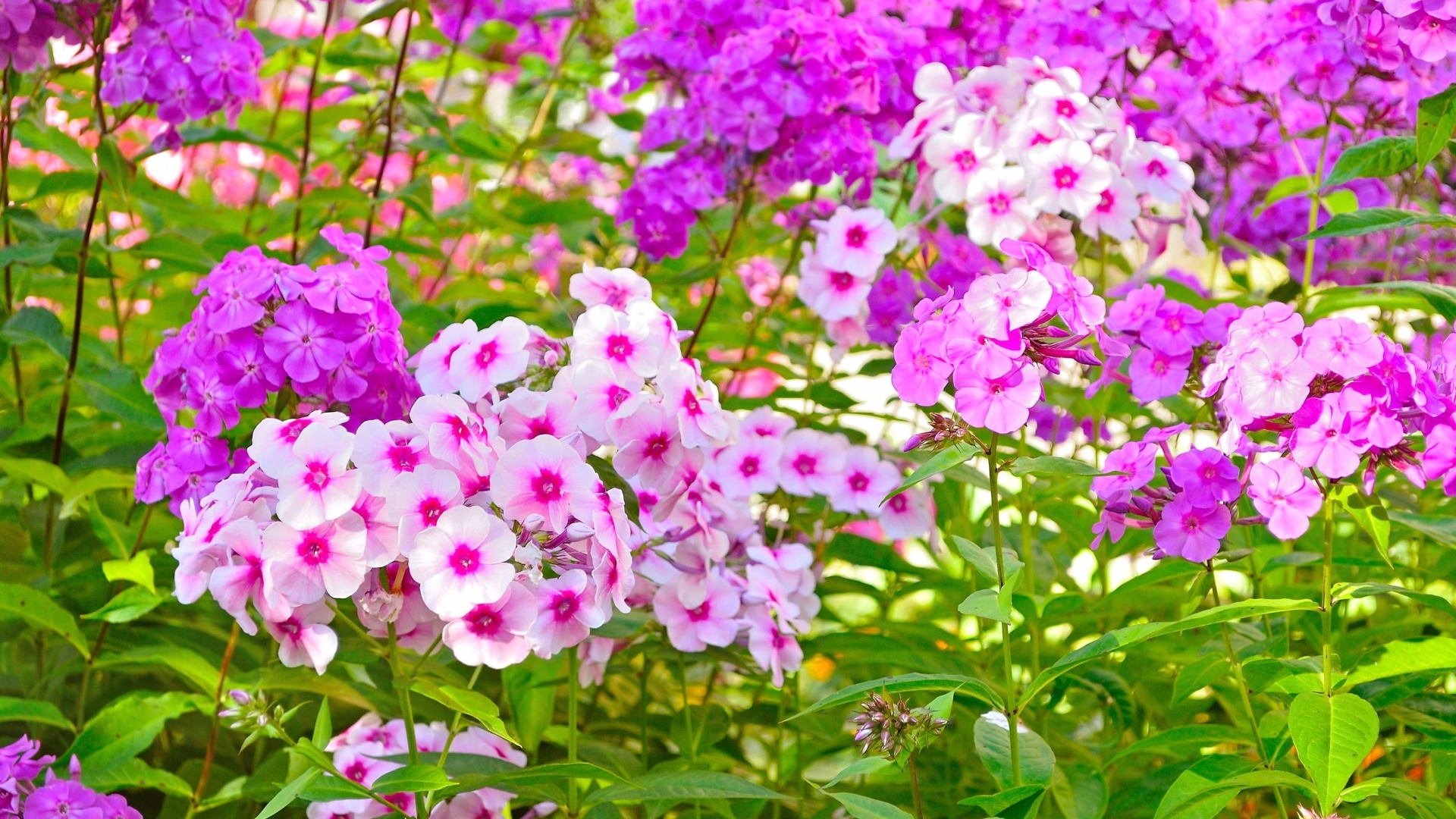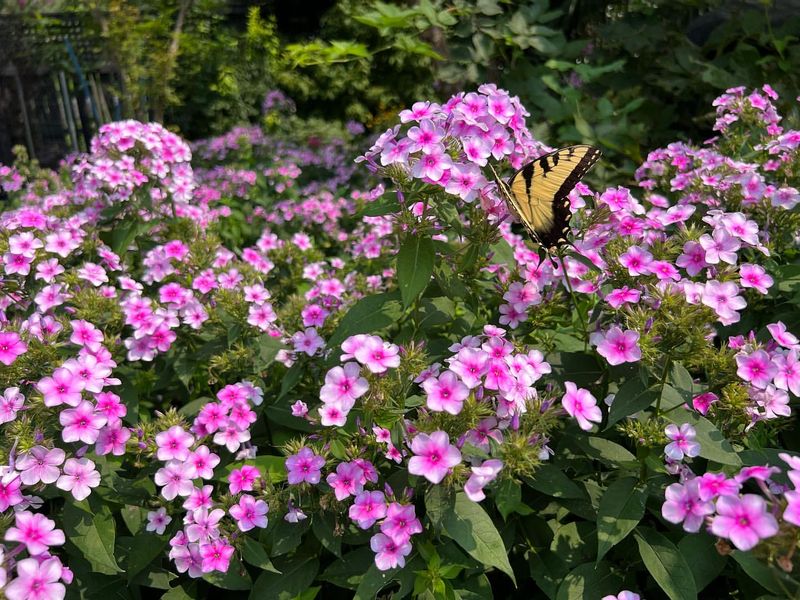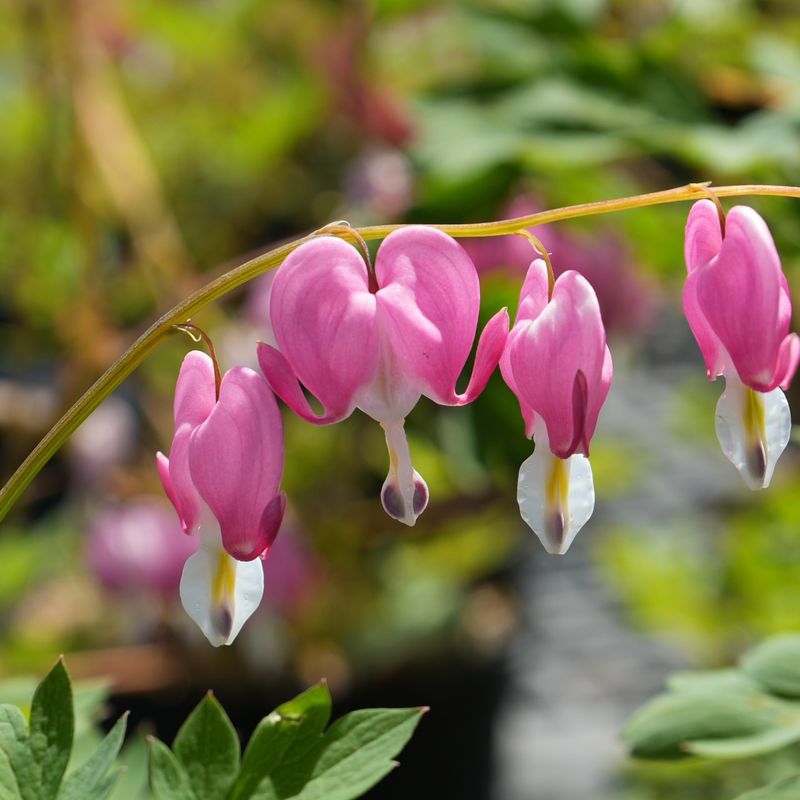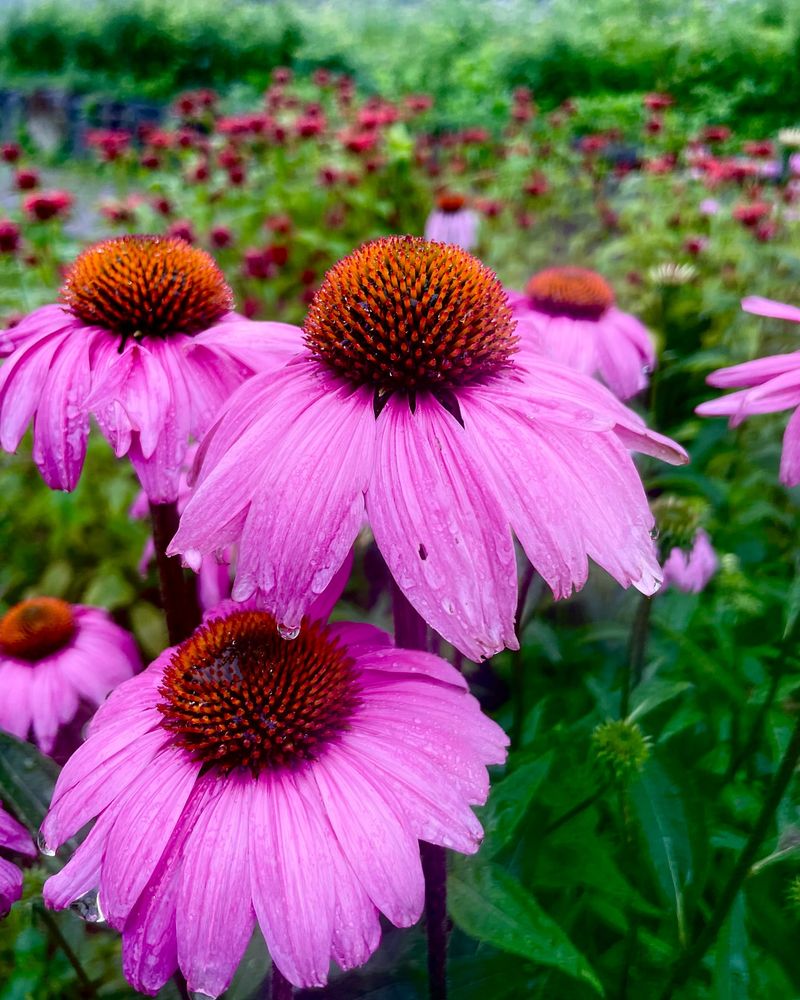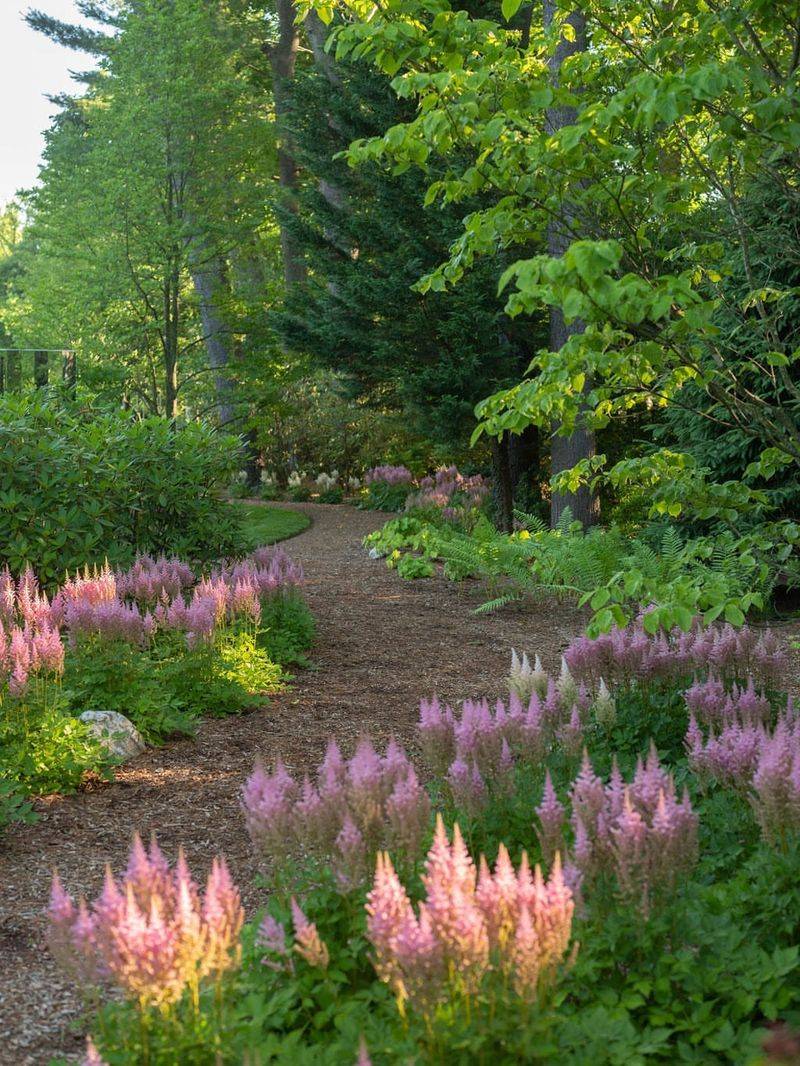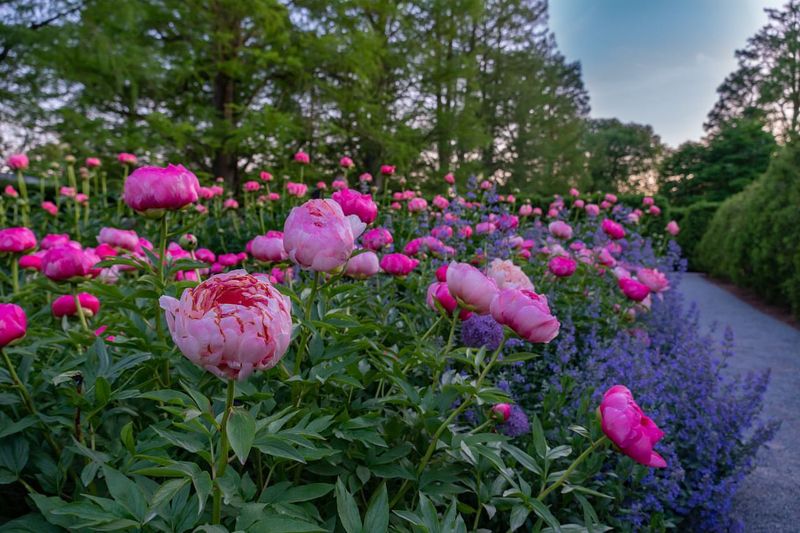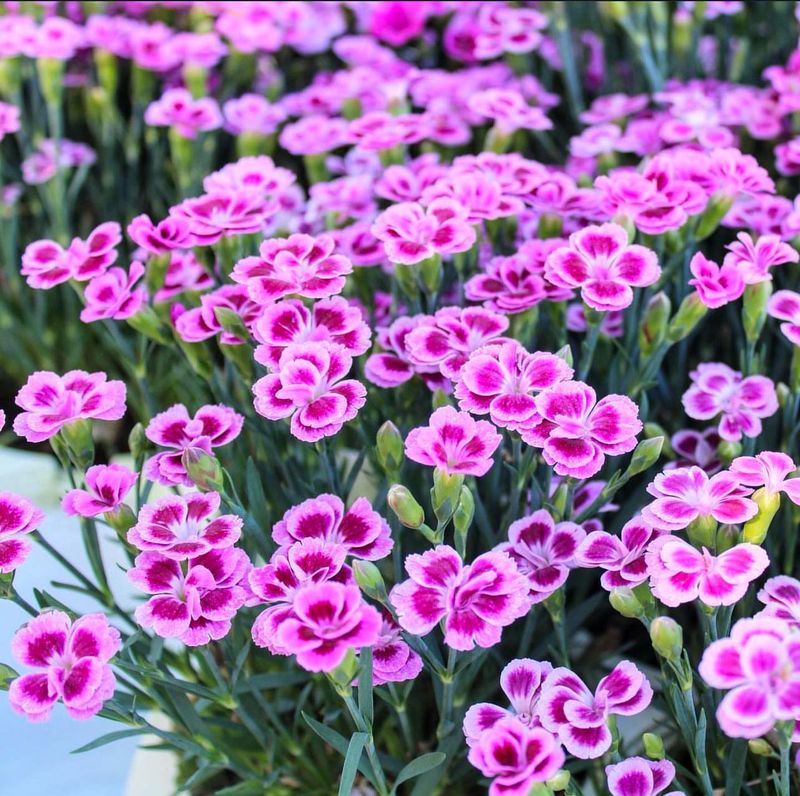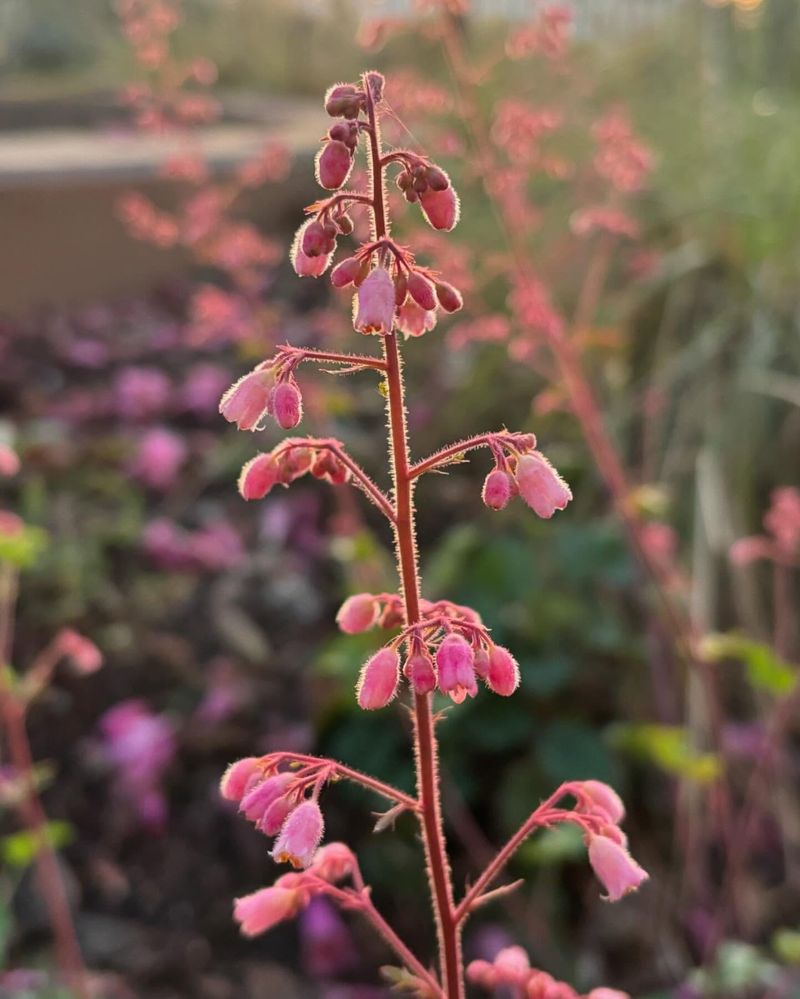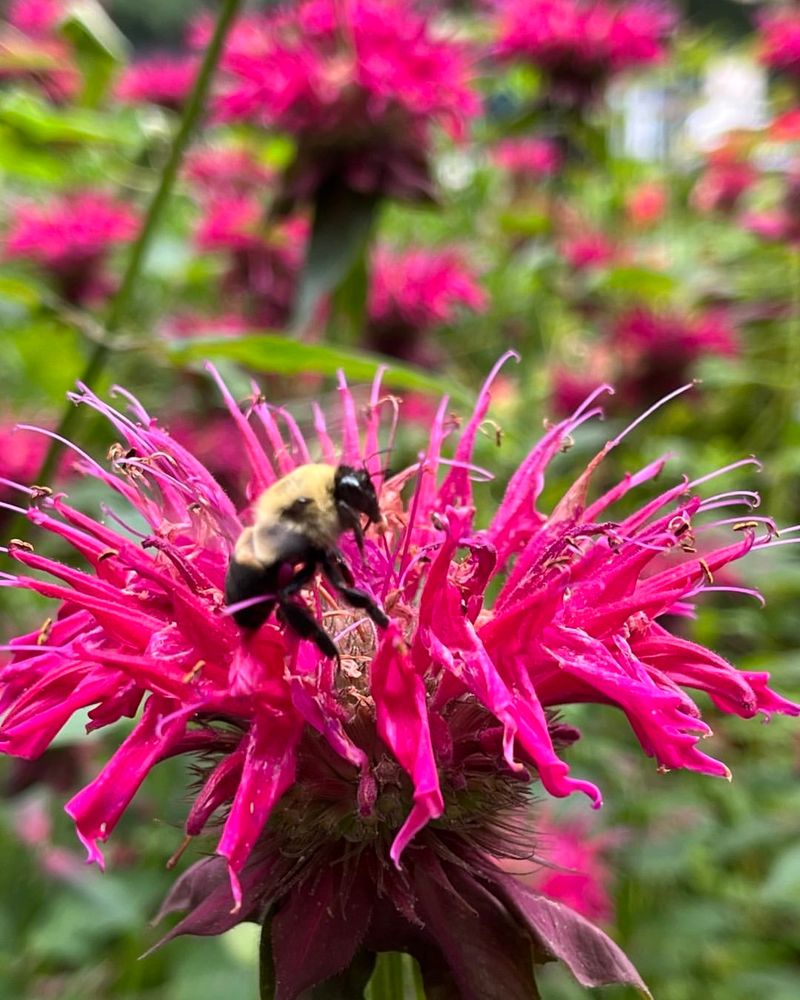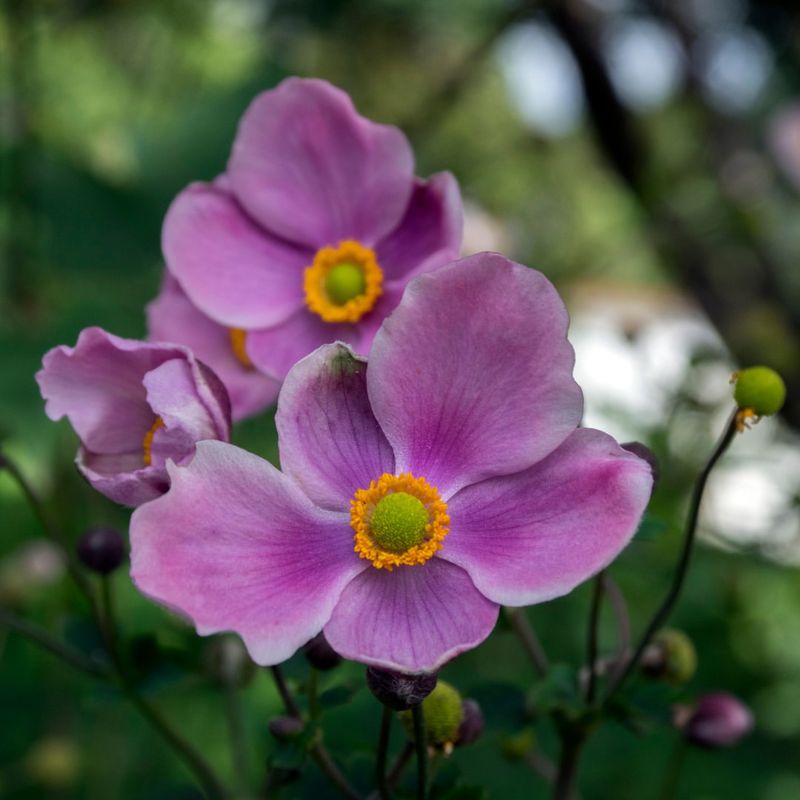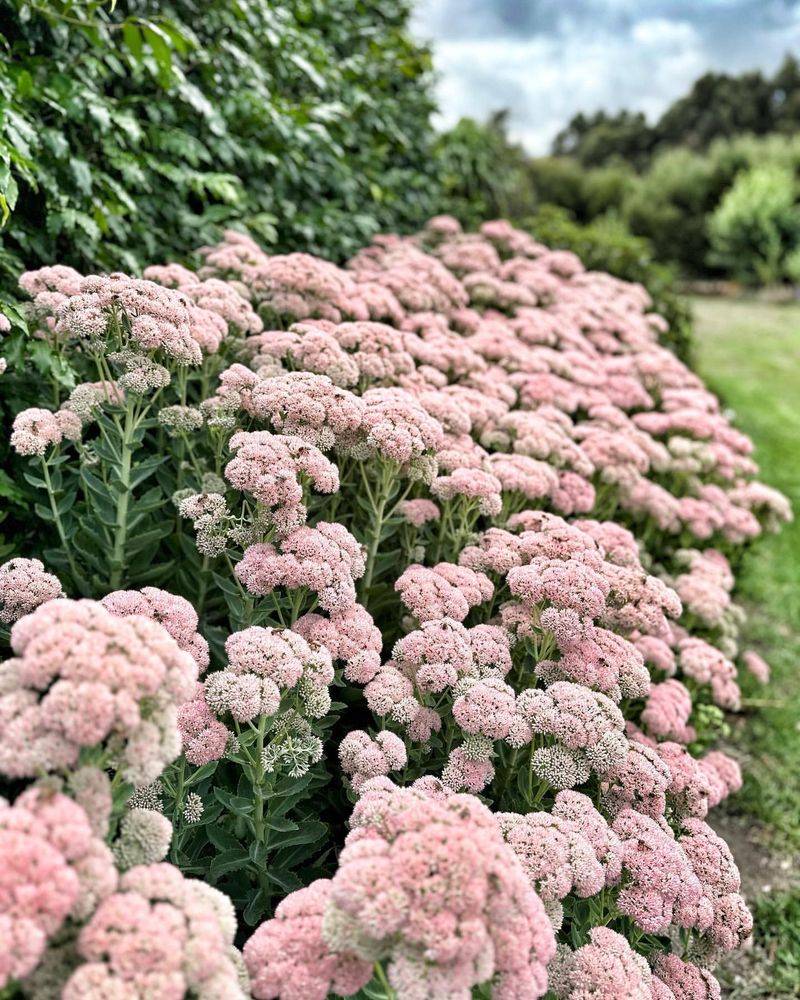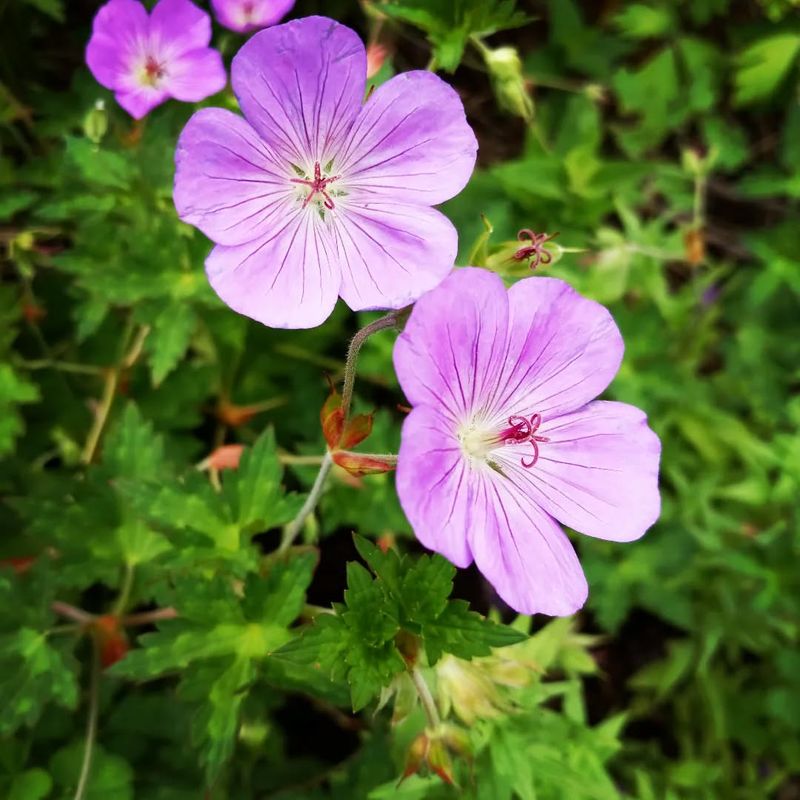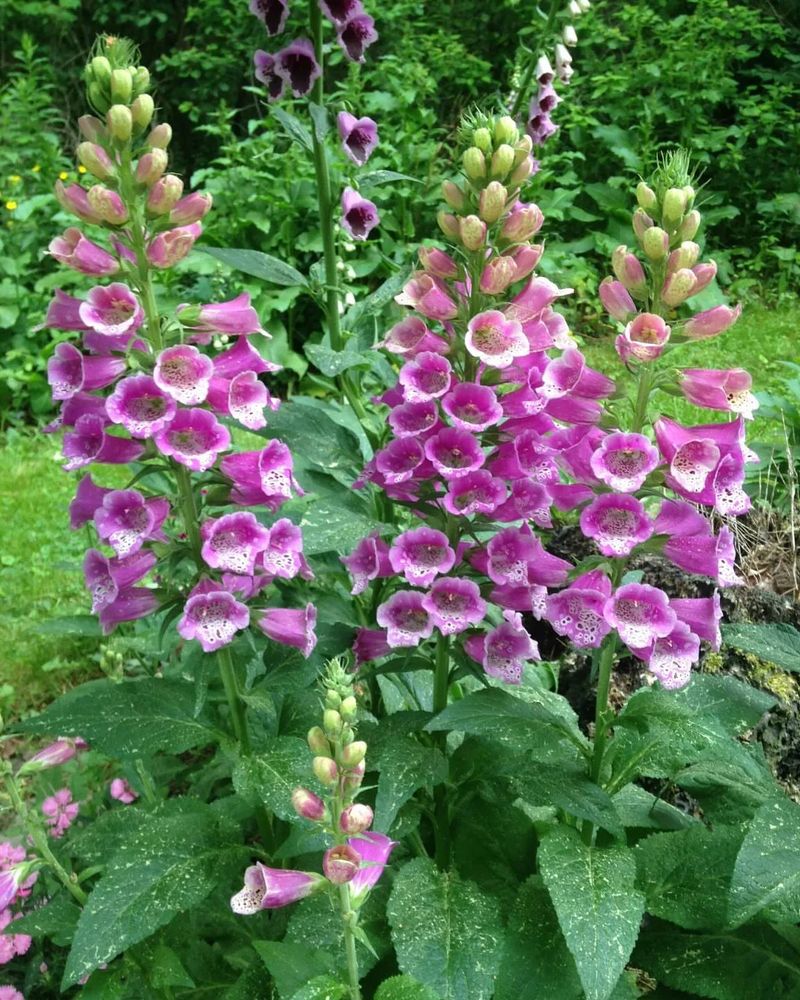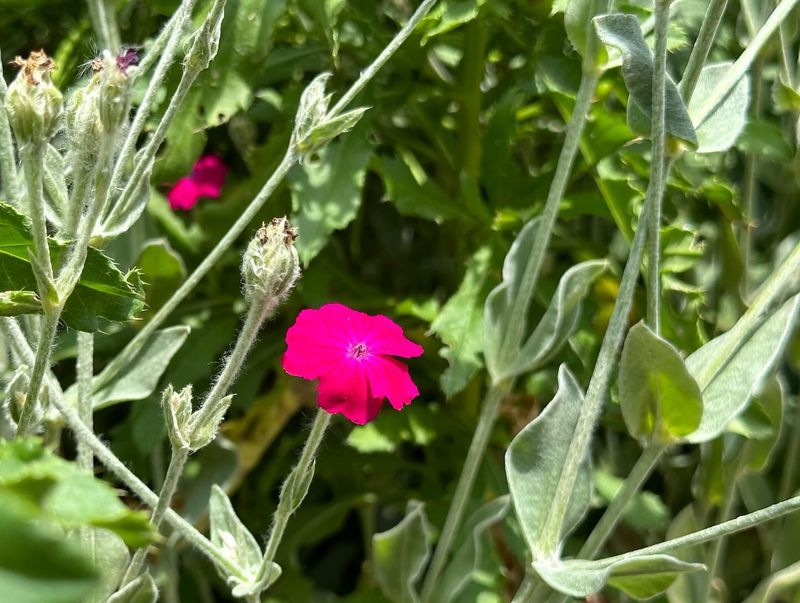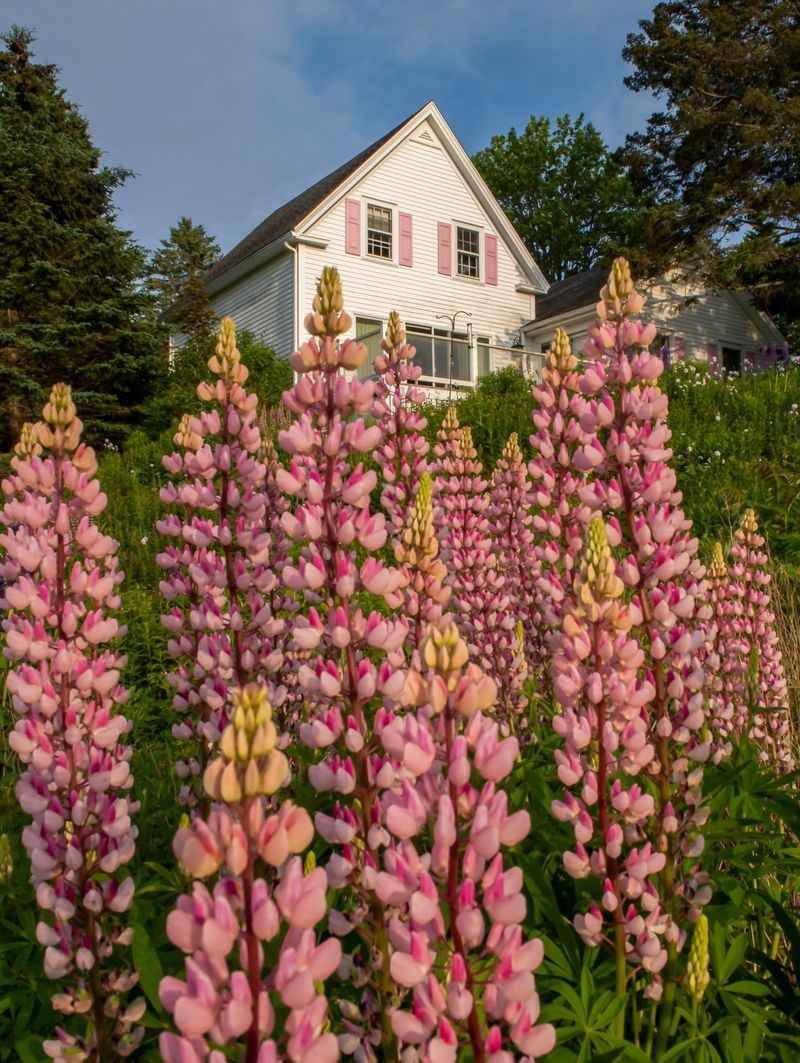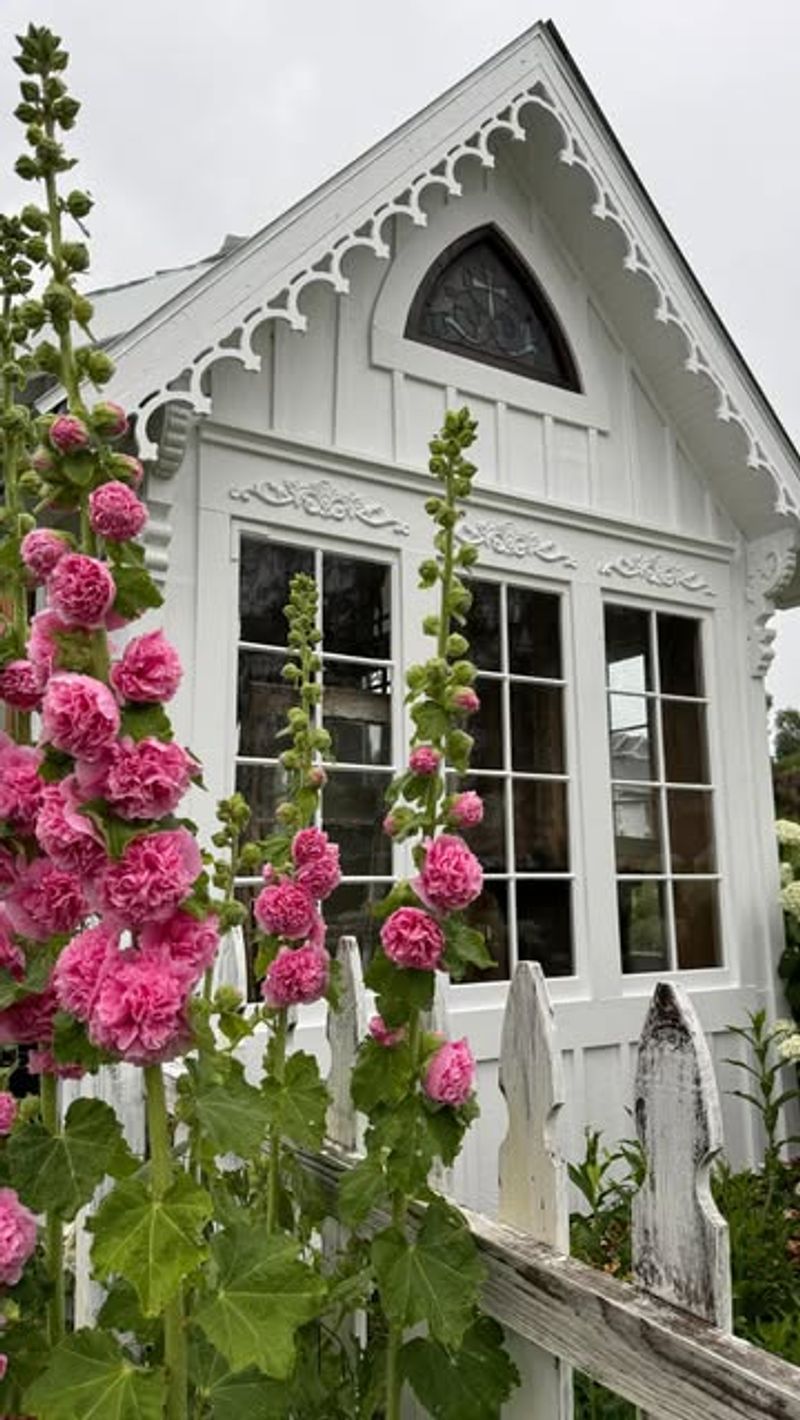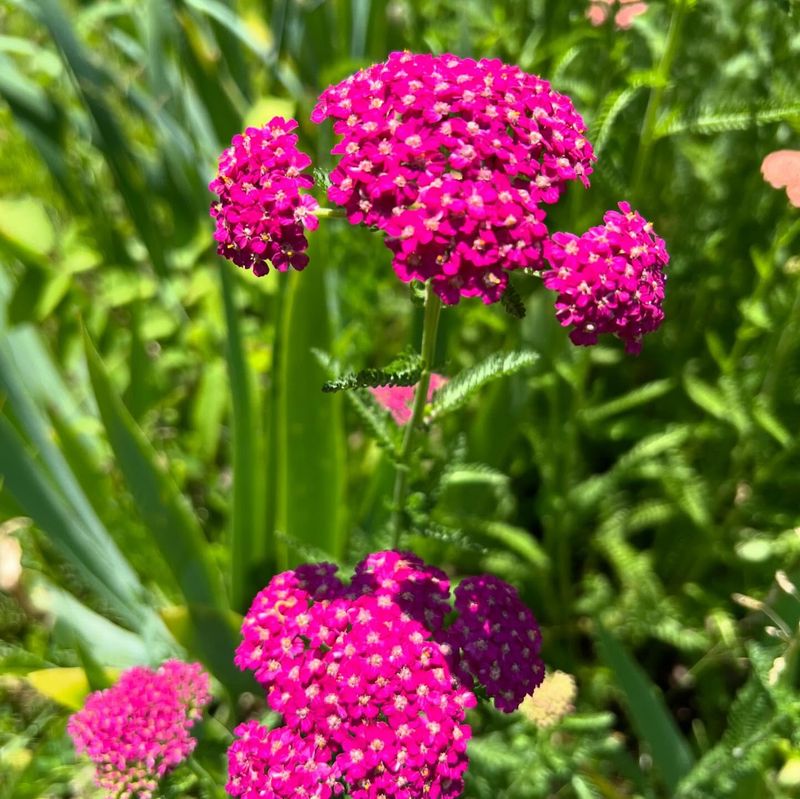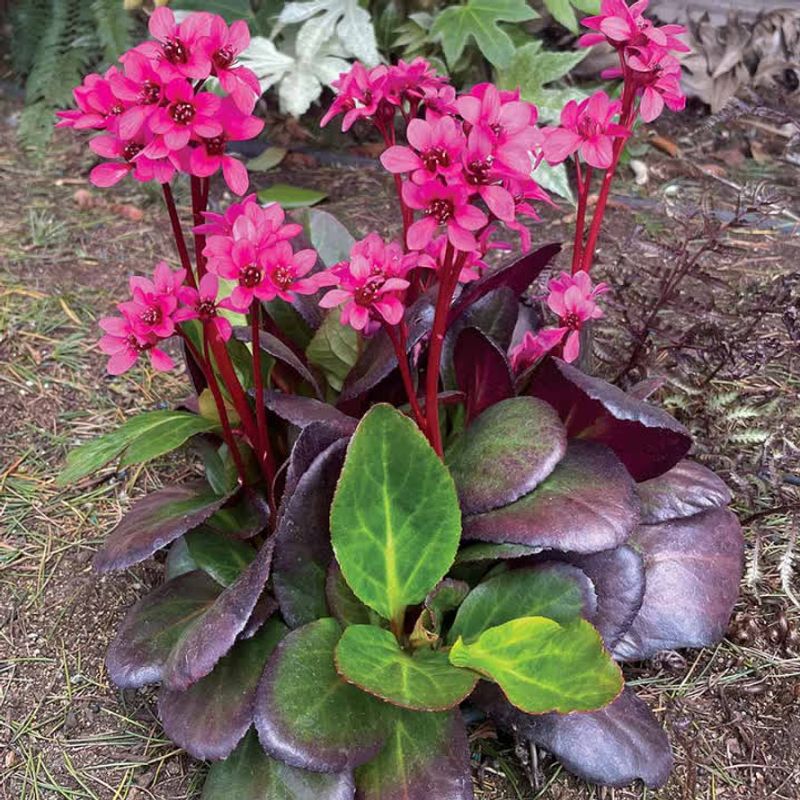In New Hampshire gardens, pink perennials bring more than just color—they bring staying power. These long-blooming favorites brighten up beds, borders, and cottage gardens from spring through fall, all while standing up to the Granite State’s changing seasons.
Easy to love and even easier to grow, these 17 pink perennials have become go-to picks for gardeners who want beauty that lasts.
1. Garden Phlox
Sweetly scented clusters of pink blooms create a fragrant paradise in mid-summer gardens. Garden phlox stands tall and proud, reaching heights of 3-4 feet in New Hampshire’s soil.
Butterflies flock to these blooms like they’re nature’s candy store. The plants spread gradually over years, forming impressive colonies that require little maintenance beyond occasional dividing every few years.
2. Bleeding Heart
Heart-shaped pink blooms dangle like delicate jewelry from arching stems each spring. Bleeding hearts perform their gorgeous show before many other perennials even wake up from winter slumber.
After flowering, the plant’s fernlike foliage continues looking attractive until mid-summer when it naturally dies back. Many New Hampshire gardeners pair bleeding hearts with later-emerging plants that fill in the space as summer progresses.
3. Coneflower (Echinacea)
Drought-tolerant and deer-resistant, pink coneflowers practically scream ‘plant me’ to New Hampshire gardeners. Their daisy-like blooms with distinctive raised centers attract beneficial pollinators throughout summer.
Leave the seedheads standing through winter, and you’ll feed hungry birds while adding visual interest to snowy gardens. Modern breeding has created varieties with intensified pink hues that maintain the plant’s legendary hardiness.
4. Astilbe
Feathery plumes of cotton-candy pink float above lacy foliage in partly shaded spots. Astilbes laugh at New Hampshire’s humid summers while providing weeks of reliable color.
Even after flowering ends, the dried plumes remain attractive through fall. Moisture-loving by nature, astilbes thrive near water features or in those slightly damp corners of the garden where other perennials struggle.
5. Peony
Grandma’s favorite pink peonies still reign supreme in New Hampshire gardens, often outliving the gardeners who plant them. Their massive, fragrant blooms create a spectacular show in late spring that no other perennial can match.
Once established, peonies can thrive for decades with minimal care. Many century-old New Hampshire farmhouses feature the same peony plants that the original owners planted generations ago.
6. Dianthus
Spicy-scented pink blooms with fringed petals give dianthus its common name ‘pinks.’ Low-growing and evergreen in milder winters, these charming flowers form tidy mounds perfect for garden edges.
Their blue-green foliage looks attractive year-round in many New Hampshire gardens. Dianthus tolerates poor soil conditions beautifully, making it ideal for rocky areas where other perennials refuse to grow.
7. Coral Bells (Heuchera)
Sprays of tiny pink bell-shaped flowers dance above colorful foliage on wiry stems. Modern coral bells varieties offer pink blooms plus stunning leaf colors ranging from silver to purple.
Hummingbirds zoom in from across the garden when these flowers appear. Semi-evergreen in New Hampshire’s climate, coral bells provide visual interest nearly year-round, with their foliage often peeking through light snow cover.
8. Bee Balm (Monarda)
Shaggy pink blooms resembling exotic sea creatures attract bees, butterflies, and hummingbirds in droves. Native to North America, bee balm feels right at home in New Hampshire’s climate and soil conditions.
The aromatic leaves smell minty when crushed, adding sensory delight to the garden. Spreading gradually through underground runners, bee balm creates impressive patches that provide weeks of summer color.
9. Japanese Anemone
Elegant pink flowers sway on tall stems during late summer when many other perennials have finished blooming. Japanese anemones bring fresh energy to the garden just when it needs it most.
Their ability to thrive in partial shade makes them perfect for woodland garden edges. Patient gardeners are rewarded richly – though slow to establish, these plants eventually form magnificent colonies that return reliably for decades.
10. Sedum ‘Autumn Joy’
Succulent foliage supports clusters of tiny star-shaped pink flowers that mature to deep rose in fall. Sedums shrug off drought conditions that would wilt lesser plants, making them perfect for New Hampshire’s unpredictable rainfall patterns.
Winter interest extends their appeal as the dried flower heads stand proudly above snow. Bees and butterflies visit in droves during late summer when many other nectar sources have disappeared.
11. Hardy Geranium
Masses of cheerful pink blooms cover these low-growing plants from late spring through summer. Unlike their annual cousins, hardy geraniums return faithfully each year in New Hampshire gardens with zero pampering.
Their finely cut foliage often turns reddish in fall, extending seasonal interest. Versatile and adaptable, these workhorses thrive in sun or partial shade, making them perfect for those tricky spots between sun and shadow.
12. Foxglove
Speckled pink tubular flowers arranged on dramatic spires create vertical excitement in New Hampshire gardens. Technically biennial but often self-seeding so prolifically they act like perennials, foxgloves establish ongoing colonies.
Partial shade tolerance makes them perfect for woodland garden edges. Hummingbirds can’t resist the tubular blooms, creating delightful garden moments as the tiny birds hover from flower to flower.
13. Lychnis
Rose-pink star-shaped flowers cluster atop silvery-gray foliage, creating striking color contrast. Often called ‘rose campion’ or ‘crown pink,’ lychnis thrives in New Hampshire’s well-drained soils.
Deer and rabbits typically avoid this plant due to its fuzzy leaves. Self-seeding generously, lychnis maintains its presence in gardens year after year without becoming invasively aggressive like some other self-seeders.
14. Lupine
Spires of pea-like pink blossoms rise dramatically from palmate foliage in early summer. Wild blue lupines are native to New Hampshire, but garden varieties offer stunning pink options that perform equally well.
Deep taproots help lupines withstand dry periods once established. Their distinctive seed pods add interesting texture to late summer gardens, and if left to self-seed, they’ll create natural-looking drifts over time.
15. Hollyhock
Towering stalks lined with saucer-sized pink blooms create old-fashioned cottage garden charm. Technically short-lived perennials, hollyhocks self-seed so reliably they maintain their presence in New Hampshire gardens indefinitely.
Their impressive height (often 6+ feet) provides dramatic vertical elements along fences and walls. Heirloom varieties passed down through generations still grace many historic New Hampshire properties, connecting modern gardeners to the past.
16. Yarrow
Flat-topped clusters of tiny pink flowers attract beneficial insects throughout summer. Drought-tolerant and practically indestructible, yarrow thrives in New Hampshire’s varied growing conditions with minimal attention.
Feathery, aromatic foliage looks attractive even when the plant isn’t blooming. Modern yarrow varieties offer intensified pink colors that hold their shade better than older types that quickly faded to tan.
17. Bergenia
Leathery evergreen leaves support clusters of pink bell-shaped flowers in early spring. Often called ‘pigsqueak’ because of the sound made when rubbing its thick leaves, bergenia provides year-round structure in New Hampshire gardens.
The foliage often turns burgundy in fall, creating additional seasonal interest. Thriving in conditions where many plants struggle, bergenia handles poor soil, dry shade, and exposed locations with equal aplomb.

